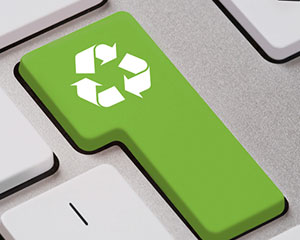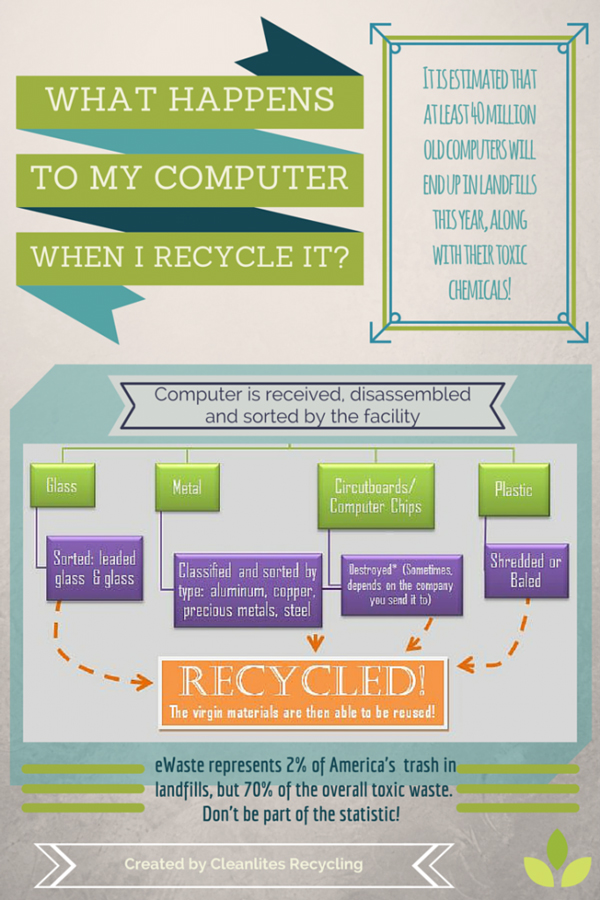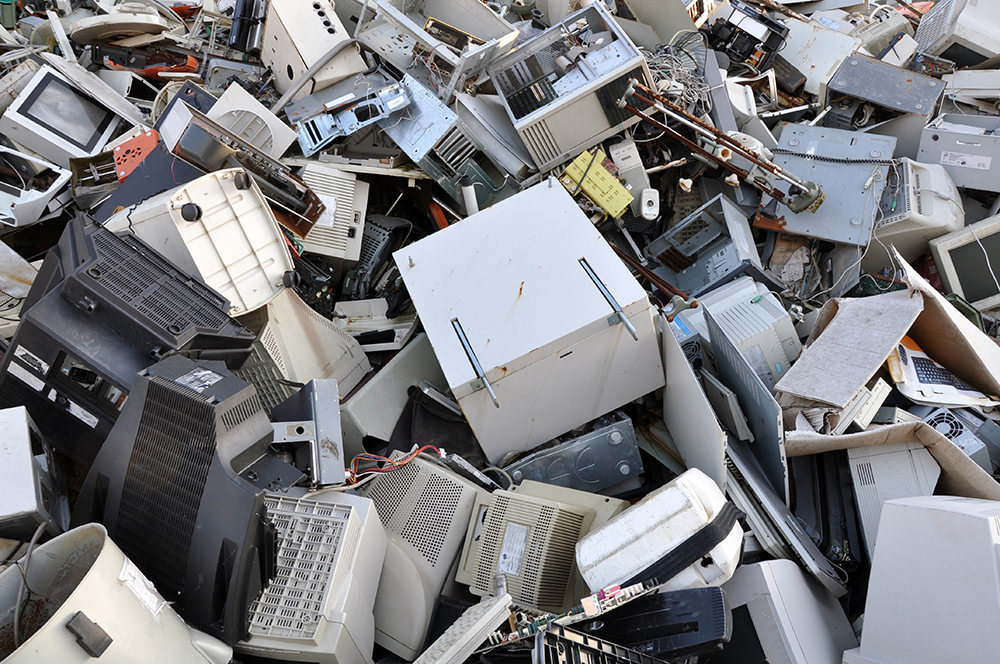A Guide On Recycling Of Computers

Featured Image: iStock.com/ImageGap
Remember how good it felt the last time you heaved your clunky, outdated computer and monitor out to the curb and went back inside to turn on your sleek, new one? Well as it turns out, that quick trip to the trash wasn’t the best idea you ever had.
A growing number of organizations are working to educate the public on what happens to their discarded, old computers and why they may want to take more precautions when disposing them. What many of us don’t realize is that our electronics and other household electrical gadgets are potential Molotov cocktails, filled with unsavory heavy metals and toxic chemicals.
The facts:
• What’s the lay-down?
Before we talk about the hazards, let’s first examine how ubiquitous these types of products have become in the U.S. and around the world. Americans own billions of electronic products, including 200 million computers. With the rates of technology turnover increasing each year and special days like Black Friday offering huge discounts on items, in the coming years, nearly a billion computers around the world will be disposed as people take advantage of the new technology and low price. And how quickly are we discarding computers in the U.S.? The EPA estimates 20 million computers were thrown out in 1998. By 2005, that number had more than doubled, with estimates at 130,000 computers being discarded daily. Now the daily number has gone well over 250,000.
• The root cause
The dangers of discarded, old computers stem from what’s inside them. Your typical CRT Monitor and PC may contain up to 8 pounds (3.6 kilograms) of lead, along with lower levels of mercury, arsenic, cadmium, beryllium and other toxic chemicals. These elements are all toxic at varying exposure levels. There is also a fairly poisonous family of flame-retardant chemicals used in most computers. Many of the aforementioned hazardous chemicals and toxic substances are known to cause health problems and in some cases death ….when exposure occurs in large doses. Not many studies have discussed low levels of chemicals, like elevated levels of toxic chemicals in the water supply or inhalation of chemicals by factory workers. It’s safe to assume the effects aren’t good.
The Process:
So what actually happens? Once the responsible recycling facility receives a computer, they will sort, grade and prepare it to be deconstructed. Next, the computer will be broken down into parts and separated by material. Both glass and leaded glass can be recycled at this stage. Plastic is shredded or baled and recycled at this stage. Metals must be further classified and sorted (aluminum, copper, precious metals, etc.), circuit boards/computer chips are, then classified and further sorted. At this point, the different types of metal can be recycled. Consider your own computer going through this process. The glass screen is removed and recycled during the break-down process. The keyboard and exterior, either metal or plastic is sorted, shredded and recycled. Lastly, all the interior components, such as, circuit boards and computer chips are destroyed, sorted by type, shredded and recycled. All parts of the computer are able to be recycled and re-used, saving tons of natural resources and raw material, keeping toxic chemicals out of the environment and eWaste out of the landfills.
What are the risks?
There are a number of factors you have to keep in mind when deciding to recycle your computer.
• Hackers
The internet is a funny place. And there are a lot of people on it who are just itching to get hold of your personal data. The same principal applies to computers sent for recycling, there have been incidents of data being recovered from devices, even after being wiped multiple times.
• Scams
There are a lot of companies who pretend to take your recyclables and then ship them to Asia where they are deconstructed at pitiful labor rate. Make sure the downstream (where the materials eventually end up) is responsible and the material is not just being dumped into a landfill or the environment. Check proper certifications, licenses and permits.
The solutions:
The only way to prevent your data from being accessed is first making sure you have deleted all the possible copies of your files. This includes cached copies which may still be stored on your computer. After that, you should choose a trusted company well-versed in executing hard drive disposal, ensuring that every trace of your data has been permanently wiped from existence.
Scamming companies can be avoided by checking proper certification, licenses and permits. You should find a trusted company and then double check its credentials with the EPA and other organizations. We, at HBI are committed to offering the best services possible and we do not compromise on quality.
What Are The Recyclable Materials Used For?
Depending upon the manner by which it is collected, most e-waste products collected for recycling are manually dismantled or mechanically shredded. Materials are sorted into various product streams: metals, plastics, glass, cables, packaging, etc. There is very little which is not recycled.
Recycled plastics are used in the manufacture of things like:
- Outdoor furniture
- Plastic plant pots
- Dashboards for cars
Metals are remanufactured into the same metals.
Leaded glass from Cathode Ray Tube (CRT) glass (from televisions) is used in the manufacture of new CRT glass and used in lead production.
Gold, lead and copper are extracted from the plastic husks by using high temperatures to melt them. Furthermore, the silicon chips and motherboards are de-soldered and an acid bath filled concentrated Nitric acid is used to extract what’s remaining of the metals.
About The Author Kelly Sampson
Kelly Sampson is a writer, blogger, and environmental enthusiast. She has strong opinions about climate change, the dogs vs. cats debate, and Oxford commas. She has lent Hummingbird International her engaging and spirited voice and turned our blog into a great place to find valuable information about e-waste, e-waste recycling, and the ITAD industry. Explore our blog to read more of her work.








